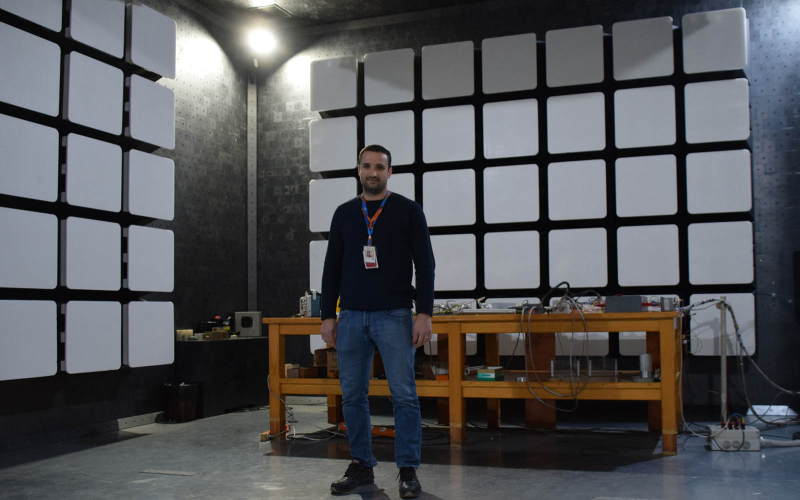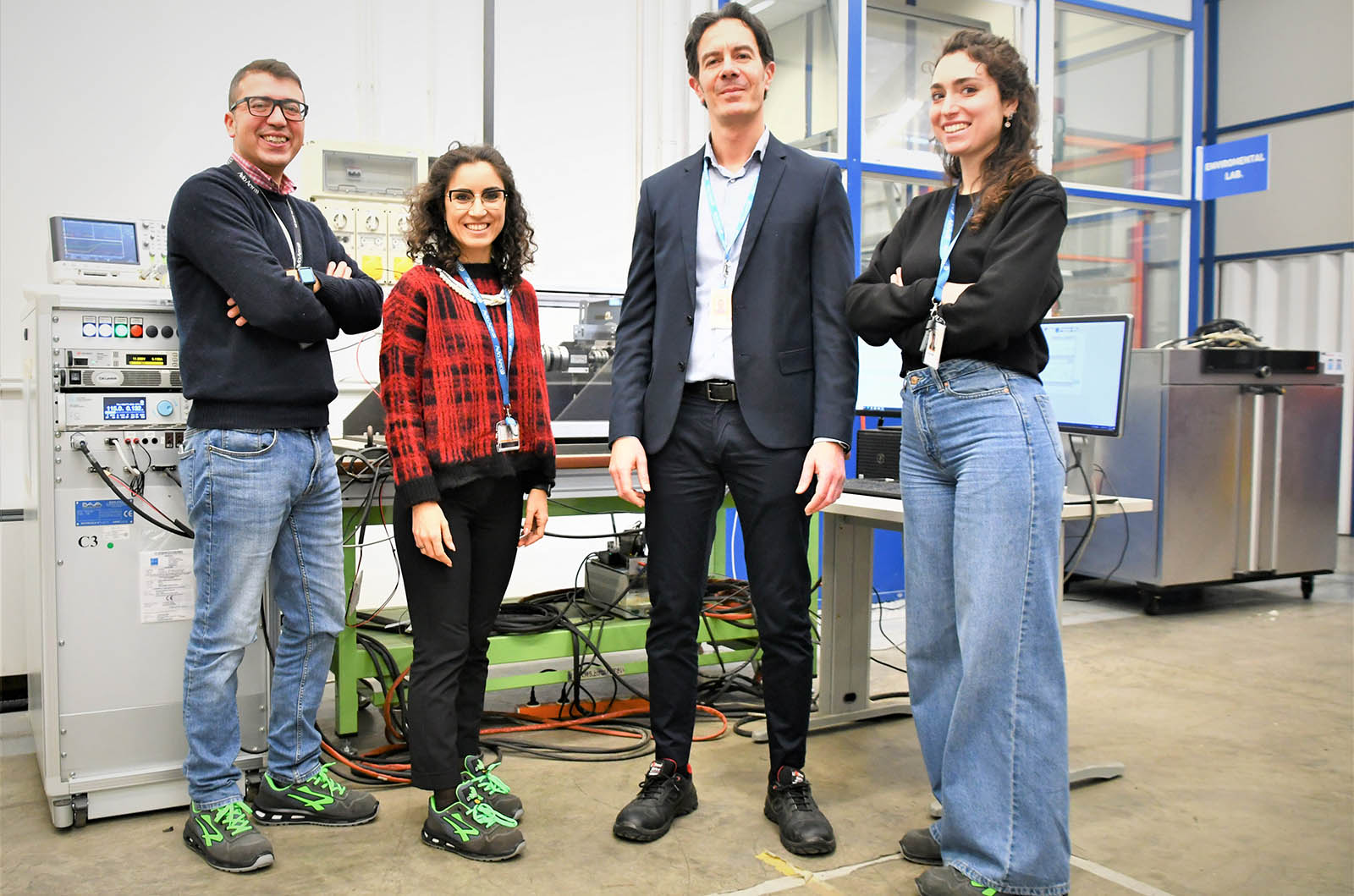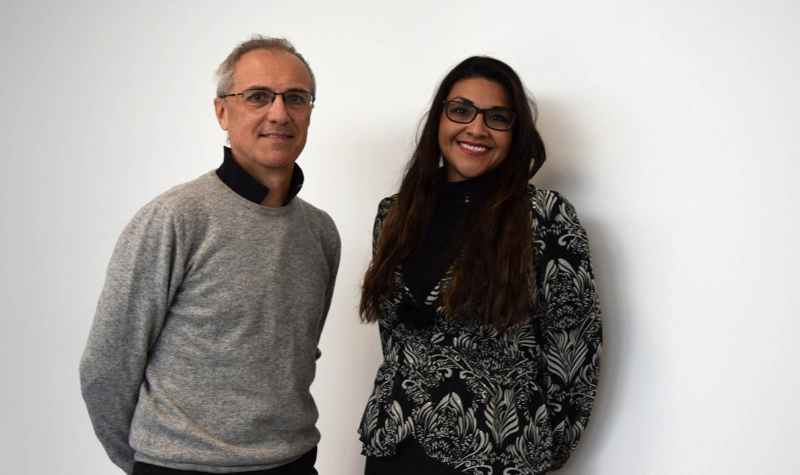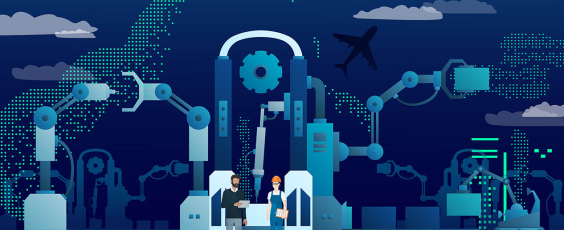Invent
Electric and Electronic Systems, between skies and seas
The Avio Aero professionals who deal with electrical and electronic products for avionics or naval applications talk about their work, the innovation that sets it apart, and future challenges.
Jan 2024
For decades now, disciplines such as computer technology, and more recently artificial intelligence, have been established realities in every area of our daily routine. Aircraft, as well as ships, are no exception; in fact, for these means of transport, the electronic and electrical part is not only essential but decisive.
At Avio Aero there is a large department, called Controls, Accessories & Marine (CA&M), within which the Electrical Systems team works on the design of electrical and electronic systems for turbomachinery (i.e., aircraft engines) and for both surface and submarine ship automation systems. Here, new products and technologies are developed, with a focus on the most enabling technological innovations in aircraft engine electrification, electric hybrid propulsion, as well as alternative fuels.
"We deal with the all-round development of products such as: sensors to detect motor parameters (temperatures, pressures), digital motor control units (FADECs, data concentrators, intelligent nodes), and electrical power equipment," explains Davide Ronchetto, Electrical Systems Sub-Section Manager. "Our approach to design depends on the type of project we are working on, ranging from co-designed development with other parties, for example when we are responsible for system integration, to entirely in-house design developed."
The work of Ronchetto and his team starts from the design of these products, which can be managed internally or in collaboration with suppliers or partners, and they form quite a large community at Avio Aero: by 2023, the team had grown from 6 to 13 members with the prospect of welcoming at least 6 more colleagues in 2024. "We have increased the capacity to generate work more than five-fold", Ronchetto explains, "in fact, we serve customers both inside and outside the company, we are involved on about 15 projects at the moment, and we collaborate with most other functions."
"At Avio Aero, we have recently renovated our testing facilities and are able to cover the highest certification standards for the civil applications"
This series of products has a significant impact on performance, such as on the efficiency of aircraft engines. Electronics and electrical components of engines help reduce engine consumption by directly acting on the ability to run at optimal levels. In addition to this, they are key to managing control and data collection (for diagnostics or prognostics, for example). Modern, digital equipment, which makes propulsion systems increasingly reliable and safe.
Lightning techniques provide one example: a compelling one, in terms of the studies and tests performed, of how essential electronic equipment is to flight safety. "In our work, as early as the design stage, we can highlight and correct any weaknesses in electrical system equipment from the point of view of susceptibility to electromagnetic disturbances (this is the case with lightning and adverse weather conditions) and the transmission of such disturbances to other systems. These tests are also part of the certification process for a modern aircraft engine. At Avio Aero, we have recently renovated our testing facilities and are able to cover the highest certification standards for the civil applications," says Ronchetto.
Pasquale De Sando is the Electronic Hardware Senior Engineer who works with Ronchetto and, with another group of experts, is dedicated to designing hardware and firmware for embedded systems: in electronics jargon, embedded systems are devices composed of multiple elements (electronics, firmware and software). Pasquale's team is young and has diversified and multidisciplinary skills, key to develop complex electronic systems’ proejects: "we have a common skill base and each member then develops more specialized knowledge, aimed at specific aspects depending on the product in question", De Sando explains.
These products intended for the avionics or naval sector are called safety critical, precisely because they perform the task of supporting the safe operation of an entire on-board system. "We ensure the safety standards required by the application, dealing not only with electronic design but also operating every verification and validation, which are necessary to transform the technical specifications into the final object. And we also carry out analysis, simulation and testing activities," De Sando says.
The present and future of flight, as Ronchetto said: the electrical and electronic component is central to the propulsion architectures being developed for hybrid-electric solutions too. This is the area dealt with by Graciela Sandoval Castro, an engineer on the Electrical Systems team who, along with other colleagues and experts, is working to support the AMBER project by Clean Aviation for which Avio Aero is coordinator.
"I cover the role of Technical Leader for the control unit for AMBER and the electrical system activities that are part of the control system," explains Sandoval Castro. "The AMBER hybrid-electric demonstrator features a thermal engine working in parallel with an electric motor powered by hydrogen fuel cells. Our group handles the development of the control units as well as the electrical and electronic accessories needed to ensure a robust control system".
"Our job is done with high precision, we often operate under the microscope: no nanometric detail must slip away from our attention"
The contribution of Sandoval Castro and team to the Clean Aviation program also extends to the second project for which Avio Aero is coordinator, HYDEA - studying solutions for powering aircraft engines (turboprop or turbofan) with hydrogen instead of traditional fuel - taking care of the electronic part concerning the development of the control unit.
Alongside the design and development work is the construction and testing work: this takes place in areas and laboratories of the large Avio Aero plant in Rivalta di Torino. Here, in the long corridors and large, well-equipped spaces, Gianluca Banfo - CA&M Supply Chain Manager - and his team (consisting of about 20 people, including manual workers, office workers, specialized technicians and a few suppliers) assemble electronic boards, various items of mechanical and electrical equipment and build wiring harnesses. They are also involved in testing, including the implementation and maintenance of test systems, or the construction of prototypes.
"Our products are intended for commercial aircraft, such as airliners, but also for fighters and military aircraft, or for large ships and frigates," Banfo explains, giving an idea of the cross-cutting nature of the systems produced at the Turin facility, from design to manufacturing. “We can count on very skilled and experienced professionals, trained and certified electrical assemblers and testers. Our work is done with high precision, we often operate under the microscope: no nanometric detail of any 'smart' equipment we put in the air or the seas must slip away from our attention.”








